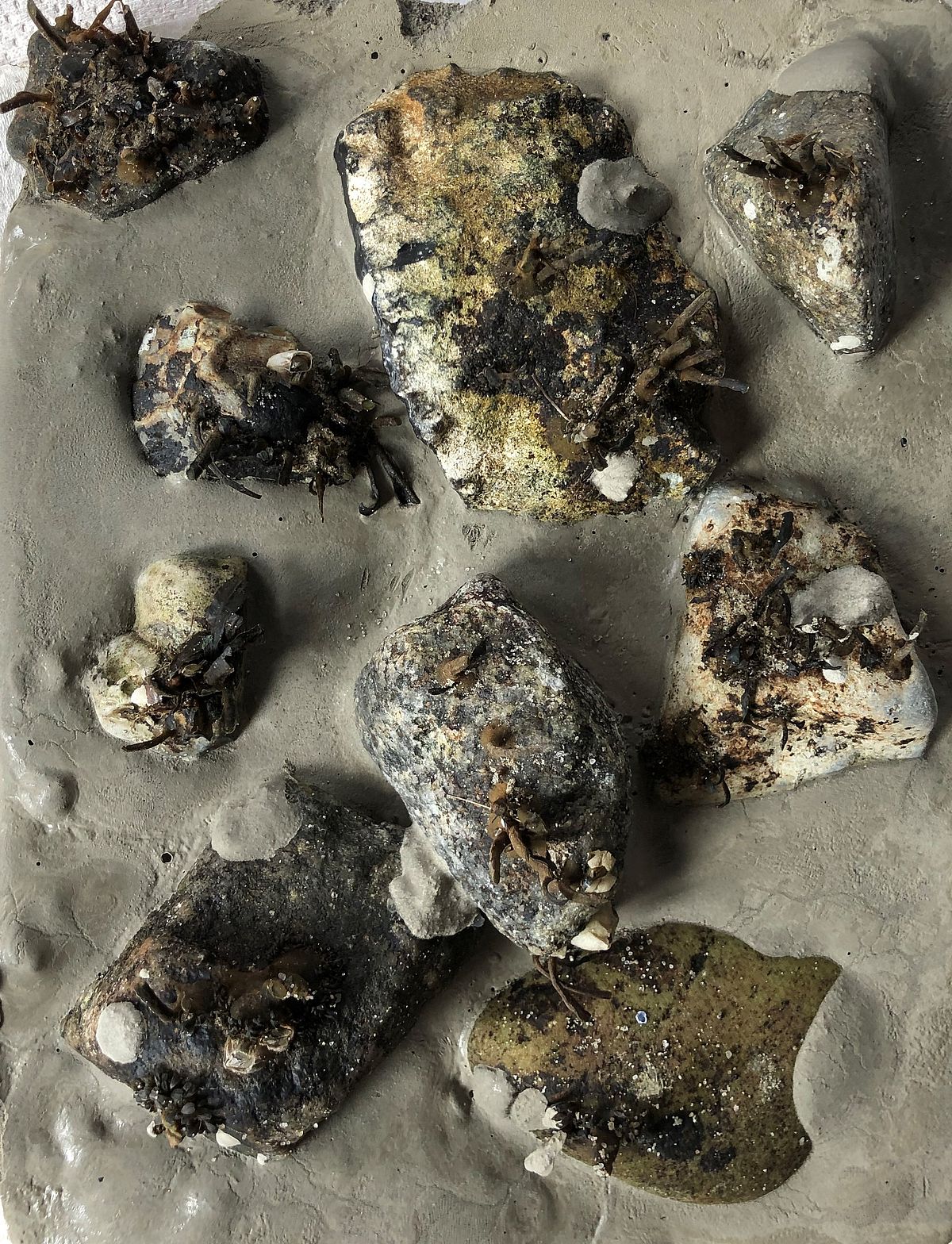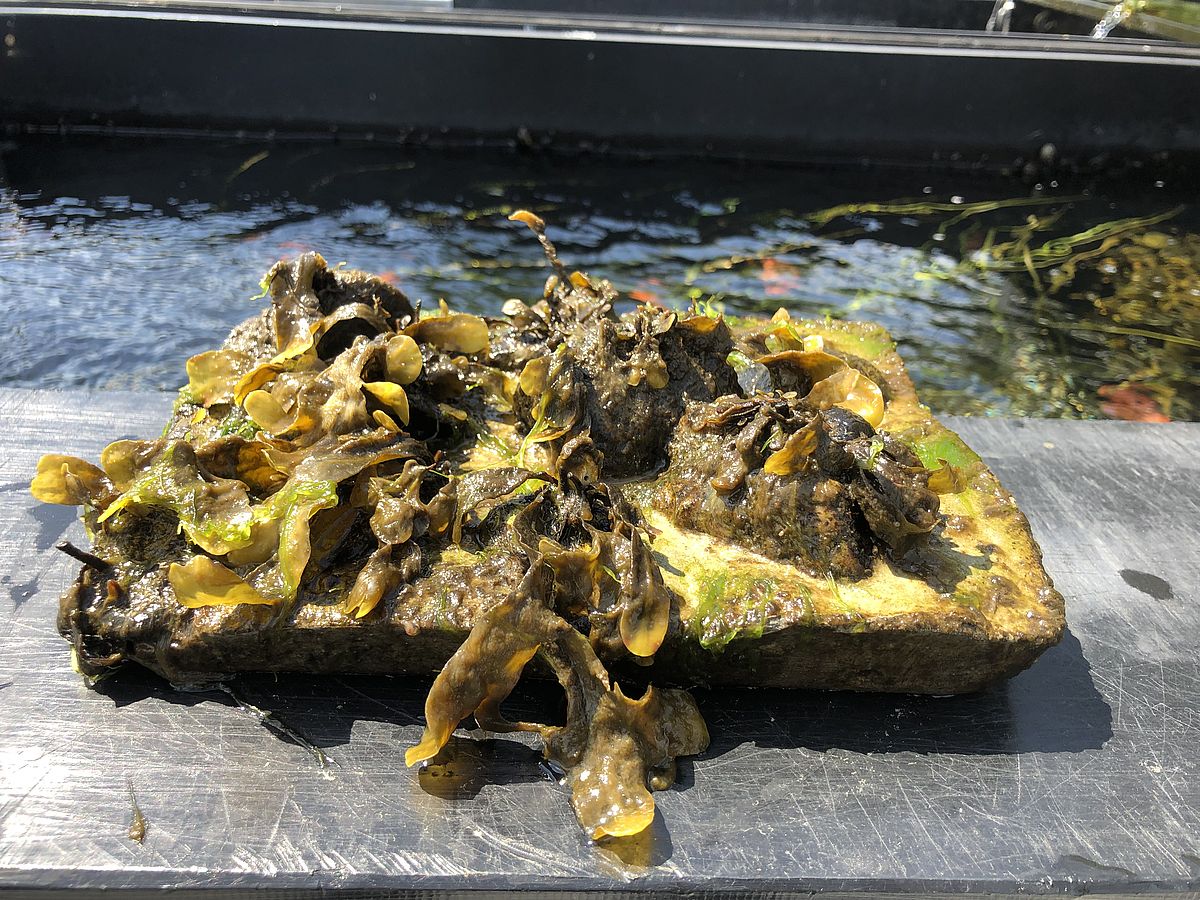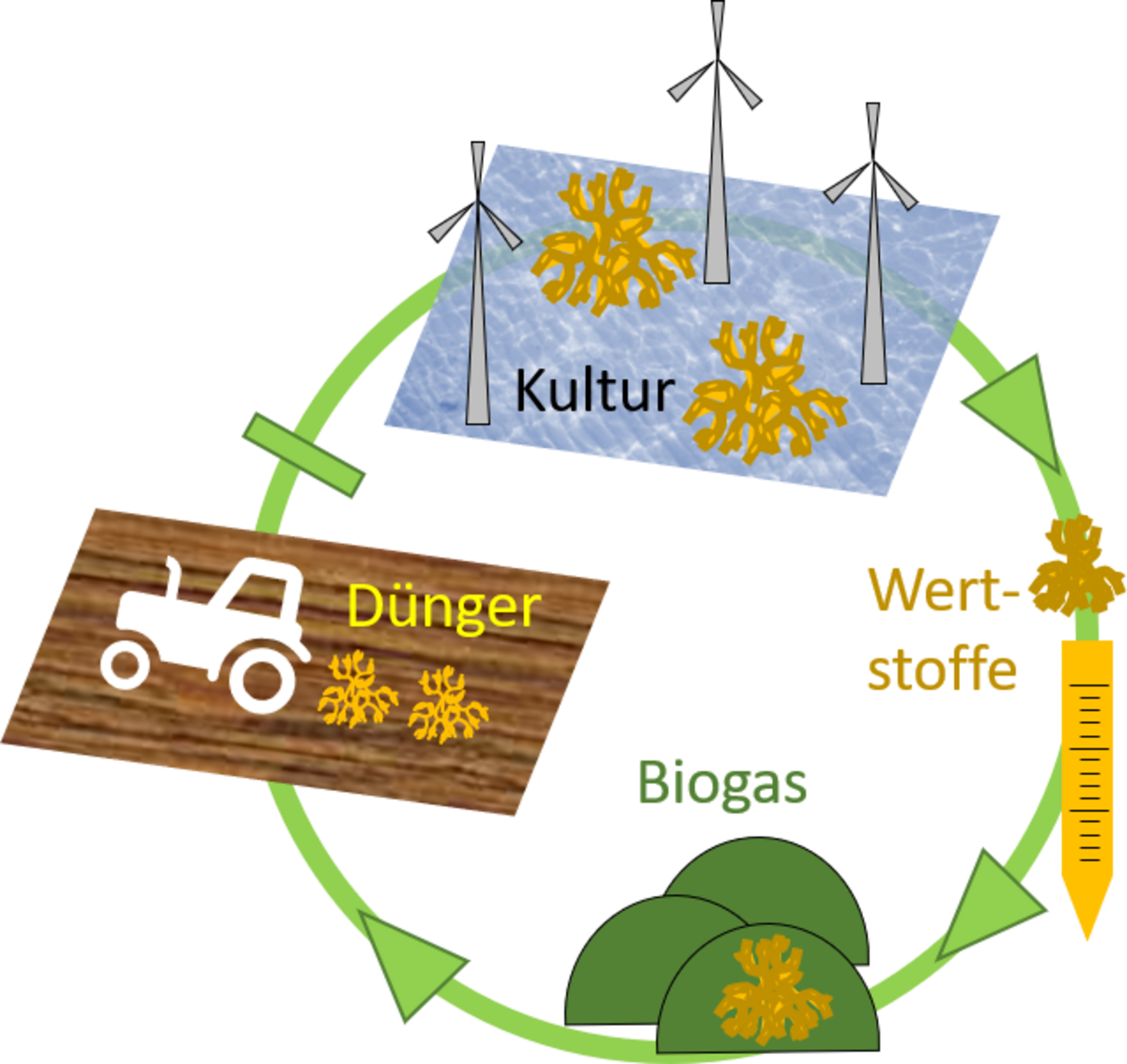Results of year 1
Insemination of various substrata
- the provoked reproduction was successful in early summer and late autumn
- for insemination zygotes suspended either in pure seawater (SW), in SW with alginate (0.5 - 1%) or in SW with the dutch gel were sprayed onto the substrata
- substrata tested were: Hemp ribbon, Jute ribbon, PVC pipe, plastic ribbon (red), plastic cord (black), stainless steel rope,stainless steel rope wrapped with hemp, glass slide (control for germling development)
- based on settlement success and environmental friendliness, we selected stainless steel rope (with or without alginate application)
- after exposure to in situ conditions (off the Kiel Benthocosms in the Fjord) about 20% of the applied seedlings survived
- growth in winter was extremely sloww or absent due to low temperature (down to 2°C) and little light (21 µmol m-2 sec-2 averaged over 24h) in January. This irradiation is just about the compensation level, leaving no extra energy for growth.
Regrowth from holdfasts
After a simulated harvesting event, e.g. cutting the bladder wrack individual just above the basal disc, in over 80% of the cases new plants sprouted from the discs. The success rate (not synchronous!) was best in spring, however the sprouting rate was smilar in other seasons only the subsequent overgrowth was heavier in summer and autumn. From spring to summer the sprouted algae grew to max length of 10cm.





